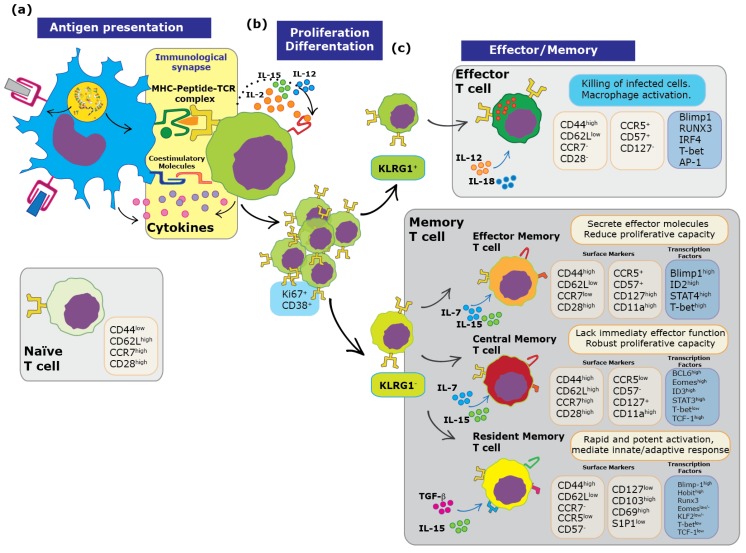Figure 1.
Steps occurring during the activation and differentiation of T lymphocytes. (a). Antigen Presentation. Activation of T cells requires the assembly of an immunological synapse with APCs, which provides three types of signals: i) interaction between the TCR and a peptide-loaded MHC class I or class II molecule, ii) co-stimulatory molecule signaling and iii) specific cytokines. (b). Proliferation/Differentiation. T cell activation induces T cell proliferation to clonally select and expand antigen-specific T cells. (c). Effector functions, surface markers and some cytokines required for homeostasis [53,54,55,56,57,58] and transcription factors that characterize each subpopulation of memory T cells. Central memory T cells (TCM) express lymphoid homing markers and circulate through secondary lymphoid organs (SLO). The effector memory T cells (TEM) lack expression of lymphoid homing markers, but express other migratory receptors with the potential to migrate through non-lymphoid tissues. The third subset of memory T cells, which consists of resident memory T cells (TRM), stably reside in non-lymphoid tissues and contribute to enhancing innate and adaptive immunity against pathogens.

